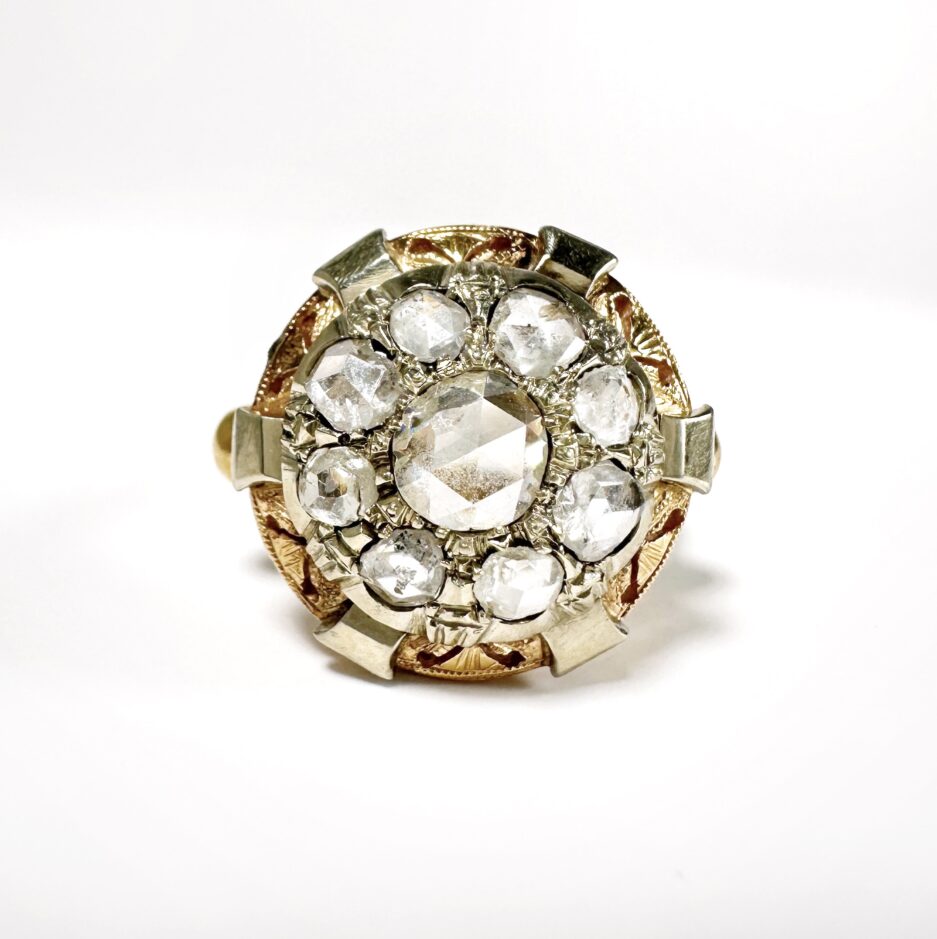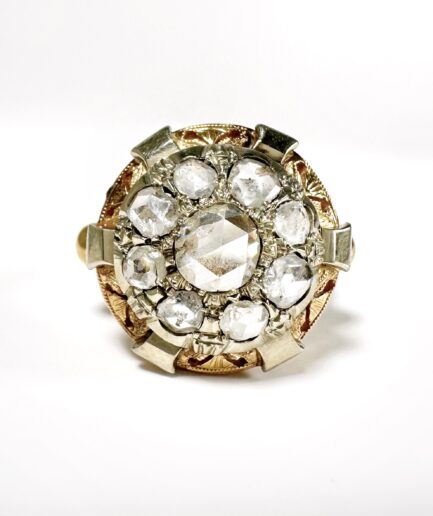Sold
Art Nouveau gold and diamond dome ring “Lystelle”
$1 500
Out of stock
- Authenticity
- Secure payment
- Free returns
- Secure delivery
Description
Sublime ring from the end of the nineteenth century in 18-carat yellow gold, featuring a central dome set with 9 rose-cut diamonds on white gold surrounded by a chiseled yellow gold border and white gold inserts. The central H color diamond, weighs approximately 0.45 carats while the diamonds surrounding it weigh approximately 0.1 carats. An open bezel brings light and sparkle to the stone, while the ring, with its shoulders enhanced with gold beads, seems to have been restored later (apparently in the 1950s). A breathtaking piece whose diamonds present an incomparable fire and the incomparable charm of the rose cut.
Size: FR 53 / US 6.5/ UK M
Weight: 5.23g
Gold hallmark 750
This unique piece had a previous life in France.
The story: The rose-cut diamond, recognizable by its flat surface and faceted dome, is one of the oldest diamond cuts, appearing as early as the 16th century. It experienced a revival at the end of the nineteenth century and the beginning of the twentieth century, particularly in the creations of the Art Nouveau period (1895–1910). This cut, softer and more discreet than modern brilliant cuts, fits perfectly with the poetic and organic aesthetic of the movement, which values curves, asymmetries and lightness. Jewellers of this era often used it to emphasize the delicacy of their compositions, alongside innovative materials such as enamel, horn or amber.
Style: Antique and vintage ringsTag: Great Wonders
Metal: 18-carat gold, Gold (all titles)Rock: DiamondEra: 19th century jewelryWedding: Antique and vintage engagement ringsGender: Women antique and vintage jewelry
 en
en
 Français
Français











